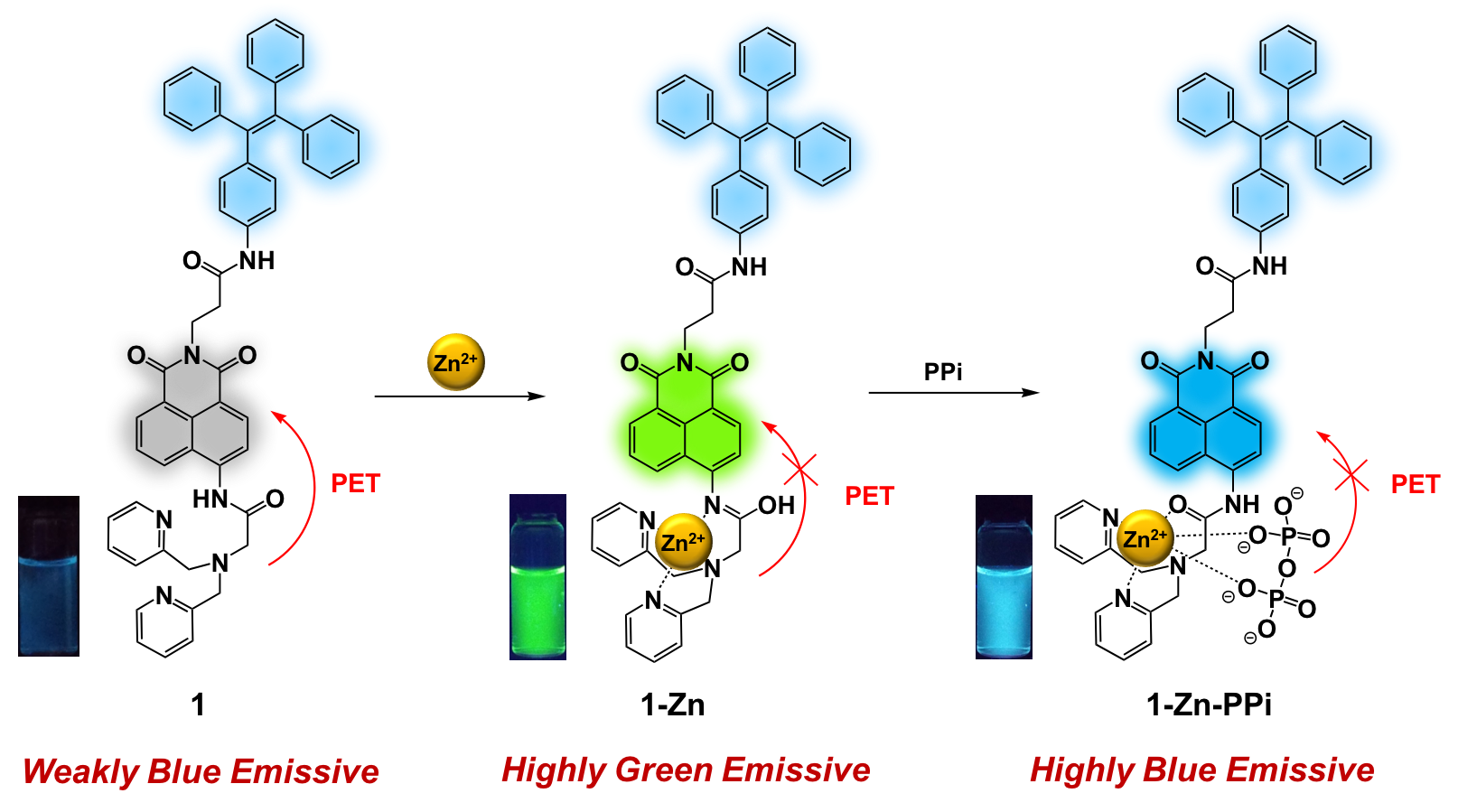|
Zn2+ is one of the significant cofactor in biological and pathological process such as brain function, gene trascription, immune function and Alzeimer’s diseases. Along with this essential metal ion, pyrophosphate (P2O74-, PPi) is also the most importantly biological involved anions in living systems. A lot of Zn2+-sensing and Zn2+ chelated PPi-sensing fluorescent probes have been developed. However, they suffered from poor limit of detection (LOD) and selectivity to Zn2+ and PPi, respectively. With this in mind, we reported a novel fluorescent probe 1, consists of naphthalimide as a fluorescence reporter, tetraphenylethene (TPE) as a well-known aggregation induced emission (AIE) fluorophore and dipicolyamino group as a zinc chelating ligand. To enhance the water solubility of 1 and its selectivity to Zn2+ ions, micelles were used to produce a micellar probe. This showed a weak fluorescence at 482 nm derived from TPE. Upon binding with Zn2+ in aqueous media at pH 7.4, a large fluorescence enhancement was observed at 530 nm due to an inhibition of photo-induced electron transfer (PET). Further addition of PPi, the fluorescence at 530 nm was gradually decreased while the fluorescence at 474 nm was increased. Thus, we found that the micellar probe 1 showed a high sensitivity and selectivity to Zn2+ even in the presence of other competitive biological metal ions along with 45 nM of LOD. Furthermore, the Zn2+-chelated probe 1 could be used for the detection of PPi among various anions. |

|
 120th General Meeting of the KCS
120th General Meeting of the KCS
 120th General Meeting of the KCS
120th General Meeting of the KCS